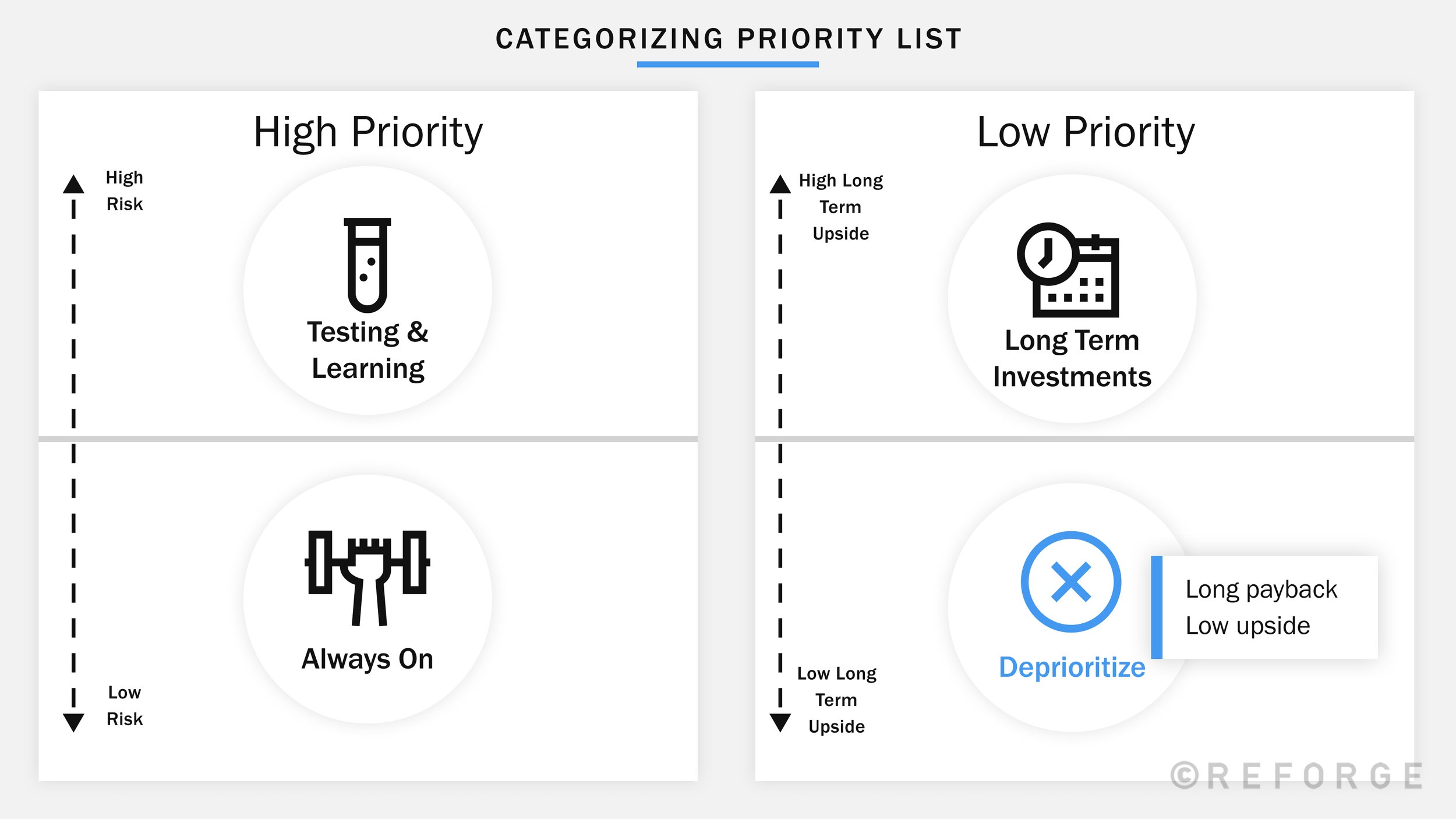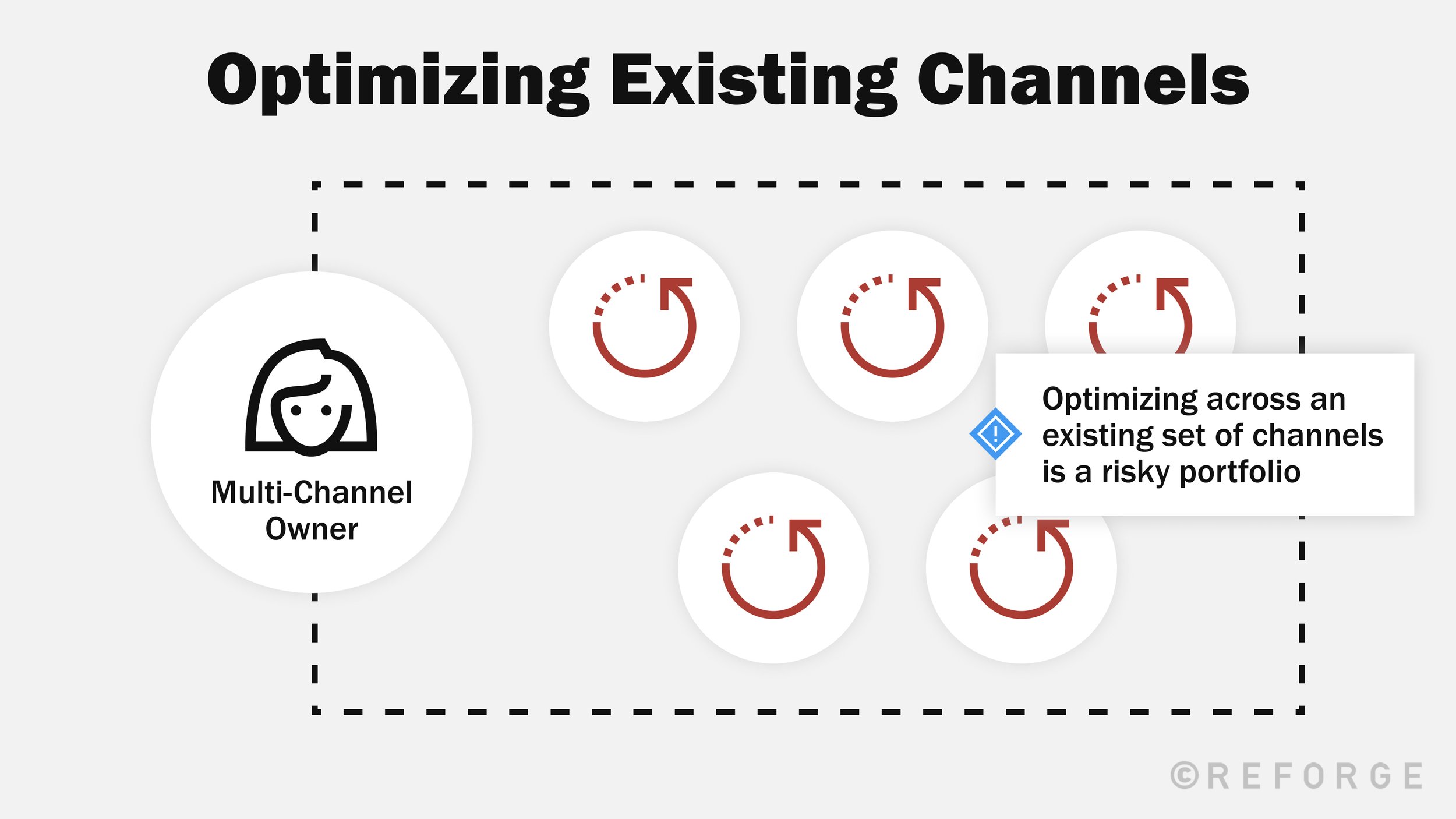Marketing Channels: A Starter Guide to Prioritizing, Investing, & Optimizing
Many marketing teams stick with familiar, proven channels. However, iterating strategy and optimizing spend across a pre-existing set of channels is a risky portfolio.
The conditions for any given marketing channel are constantly changing and outside of your control: Competition arrives, consumer behavior shifts, user or customer preferences change, and your product evolves.
To withstand each of these changes, you need to be able to evolve and adapt the channel portfolio when other marketing channels become a better fit for your complete strategy. In this guide, we’ll walk through:
P.S. We cover end-to-end channel prioritization in our Growth Marketing program. Apply today to unlock access.
Evaluating Marketing Channels
So, you want to invest in a new marketing channel? We recommend evaluating channels across three different types of attributes: Fit, Behaviors, and Levers.
Marketing Channel Fit assesses the user relationship with a channel and how the channel would align with your strategic foundations.
Marketing Channel Behaviors assess the mechanics of a channel.
Marketing Channel Levers consider the tools available to adjust your approach and assess performance over time.
Marketing Channel Prioritization
We recommend identifying priority marketing channels by first looking at their expected payback period. Then, look at the short term payback period channels and evaluate them based on their level of risk.
We can also look at long term payback period marketing channels and evaluate them based on their potential upside.
Here’s a helpful spectrum to structure four categories of channels for prioritization:
Always-on channels - those that have short Payback Period and Low Risk
Test and Learn Channels - those that have Short Payback Period and High Risk
Long Term Investment Channels - those that have Long Payback Period and High Long Term Impact
Deprioritized Channels - those that have Long Payback Period, Low Long Term Impact
Marketing Channel Investment
Put the deprioritized channels off to the side, and focus on three remaining categories of spend. We can use these channels for reference in our budgeting process.
We can refine our investment thesis to define the financial priorities of the business and how that informs tradeoffs in our marketing channel investment strategy.
To help, consider these three investment archetypes:
Monolithic & Mature: Larger, more established, and confident in primary marketing levers
Growth Seekers: Focused on a specific objective and view marketing as a lever to get there; cash positive
Learning & Emerging: Cash constrained and still exploring their marketing levers
Our priorities typically cluster around the three archetypes, which we can use to inform how much we want to allocate across our three categories of channels.
Single Marketing Channel vs Multi-Channel Optimization
If you’re a single-channel owner, you are used to performance optimization, meaning whatever your channel is, optimize it wherever possible.
As a multi-channel owner, there are higher-level strategies needed to scale learnings across the team and improve the performance of the overall channel portfolio.
Let’s focus on these strategies next.
There are three specific channel strategies that Multi-Channel owners should use to optimize their channels' performance:
Strategies to scale new channels
Audience driven strategies
Lead qualification strategies
Let’s start with scaling new channels, using the test and learn channels we've prioritized.
Optimizing Existing Marketing Channels
Many marketing teams stick with familiar, proven channels. However, iterating strategy and optimizing spend across a pre-existing set of channels is a risky portfolio.
The conditions for any given channel are constantly changing and outside of your control: Competition arrives, consumer behavior shifts, user or customer preferences change, and your product evolves.
To withstand each of these changes, you need to be able to evolve and adapt the channel portfolio when other channels become a better fit for your strategy.
Yet, this is easier said than done. Scaling new channels is difficult, because you need to find the right balance between leveraging what you've learned from other channels and finding a tailored approach for the nuances of the new channel.
Approaching New Marketing Channels
As a multi-channel owner, you may not be the one with your hands on the keyboard directly optimizing the new channel. Rather, you own evaluating the new channel opportunities, guiding the test strategy, and calling the results. And, you own more of the risk when test opportunities fail to bear fruit.
So it's critical to have strategies to leverage for scaling new channels.
When you have a set of strategies to leverage, you can build a pipeline of new channels to test and scale, allowing you to diversify and de-risk your channel portfolio.
Common New Marketing Channel Pitfalls
However, most marketers face a couple pitfalls when they go to scale a new channel:
Before they start scaling, they start with the wrong expectations.
And when they go to actually test and scale the channel, they leverage the wrong inputs.
To dig deeper into exploring your marketing channel investments, Apply to Reforge to unlock our extended library of resources on marketing channels.







